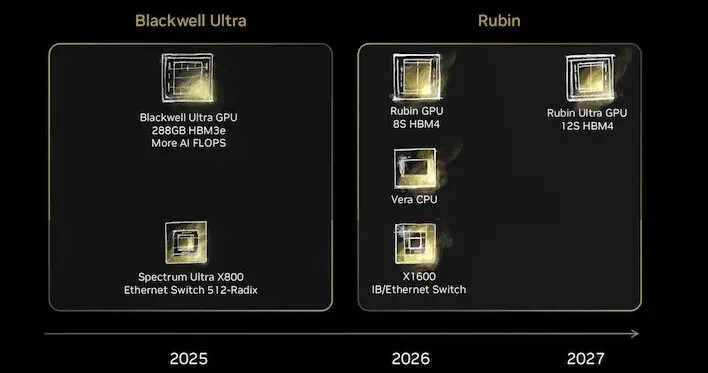The next architecture from NVIDIA, known as "Rubin," will be the successor to the current "Blackwell" architecture that powers the company's AI GPUs and the upcoming GeForce RTX 50-series gaming GPUs. It is unlikely that NVIDIA will use "Rubin" for gaming GPUs, similar to how they did not use it for "Hopper" and most of "Volta." The AI GPU product roadmap released at SC'24 shows that "Blackwell" will continue to lead the company's AI GPU product lineup until 2025, with "Rubin" taking over in the following year for a two-year period. This will be followed by a larger GPU called "Rubin Ultra" in 2027. A report from United Daily News (UDN) states that the development of "Rubin" is ahead of schedule by 6 months.
Being ahead of schedule by 6 months does not necessarily mean that the product will be launched sooner. It does, however, provide NVIDIA with extra time to evaluate "Rubin" in the industry and make any necessary last-minute changes or even advance the launch if desired. The first AI GPU powered by "Rubin" will come with 8-high HBM4 memory stacks. NVIDIA will also introduce the "Vera" CPU, which is the successor to "Grace," as well as the X1600 InfiniBand/Ethernet network processor. According to NVIDIA's SC'24 roadmap, these products were originally planned for a 2026 release. In 2027, NVIDIA will release a larger AI GPU based on the "Rubin" architecture, known as "Rubin Ultra," which will feature 12-high HBM4 stacks. The current "Blackwell" architecture from NVIDIA is a tile-based GPU with two dies that have full cache-coherence, while "Rubin" is rumored to have four tiles.
